|
|
Post by Dave on Jan 10, 2013 16:44:09 GMT
It is true is it not that home is where your heart is? and that place may be a million miles away from where you were born and grew up. Many people having spent a good part of their life living elsewhere do in the end return for the latter years of their live back to the area where they were born.
The place where we grew up will hold so many memories for us, it was the pace we went to school and made new friends, maybe kissed our first girlfriend of boyfriend and mostly hopefully they will be fond memories.
The place could be a thriving modern City, or even a rundown old town, but it will be the pace you will still refer to as hone, as it is the place you came from and might still have family and friends still living there.
Many people decide to leave the place they were born and grew up and for a whole host of reasons. I maybe wrong but I would suggest one of the main reasons people leave Torbay, is to seek career opportunities to better their lives as such opportunities are really limited here.
Many other people never move away from their birthplace and if they do it will be to a nearby town so they can still remain in the area. It might be due to their love of the place, it might even be it’s a place they feel secure due to its familiarity and also that so many loved ones and friends live nearby.
I’m not a Paignton boy as I was born and grew up In Newton Abbot, a place that holds so many wonderful memories for me and will always be dear to my heart. If I had grown up anywhere else, then I might not have found the love I have for football, because it was in Newton Abbot I first fell in love with the game.
I never wanted to leave Newton Abbot; it was my first wife who did so she could be closer to her mum in Torquay. I must have been a round 23 years old when we packed up and moved to Torquay. I lived there for nearly ten years before circumstances changed and I moved on my own( with a very young Anthony in toe) to Paignton.
I have been living here for well over 23 years now and it is the place I now call home, but I do not see myself as just living in Paignton as I feel I’m a part of the whole of the Bay. Torbay is a place I care about and feel very lucky to live in; it has its faults and flaws, but is a very beautiful place.
When you drive around the Bay, you will get some many wonderful views to enjoy that will take your breath away and bring a warm smile on your face. Only a few months ago Lyn’s mum came down and stayed with us here in the Bay. I will never forget how her eyes lit up when driving towards Torquay seafront from Paignton in the evening. With all the lights on it is such a wonderful sight and that first sighting is one she is never going to forget.
It does not matter where you live today as most town centres are not what they once where. We have played a part in that by shopping in Supermarkets and out of town shopping centres along with buying good from the internet. Car park charges and on street parking meters have also played a big part, sadly it’s just a sign of the times we live in.
Open your eyes and look deeply in any town and city you will find evidence of decline and neglect, its sad that it was allowed to happen in the first place and even sadder nothing is often done about it.
Torbay has been no different and was allowed due to neglect mainly, to start looking rather shabby in a number of locations; one only has to remember a good part of the Torquay promenade being fenced off for years, to know what I’m talking about. At last the repairs have been done and it’s all fully open again and what a difference it has made to an area that looked run down and neglected. Just needs the new hotel etc to be built and finished, to complete and restore that area of the Bay.
I love living here because it is a safe place to live on the whole, its not crime free and Torquay harbour side on a Saturday night is no different than any City centre with drunks and people intend on causing trouble, but once again that is just a sign of the times we live in.
During the summer months there is always something going on down on Paignton Green, I often find myself down there on a Sunday afternoon. We have so many wonderful coves to enjoy and walks as long as you do not mind hills. I took Lyn to Broadsands recently and sat with her on a bench over looking Torbay. Sheer heaven just sitting there looking over towards Goodrington, Paington and Torquay and all for free.
You only need to drive a few miles to discover the joys of Dartmoor, or some delightful village full of thatched cottages. So many of these villages hold wonderful fetes that have been taking place for centuries, great fun as long as you do not mind Morris Dancing.
You are not likely to get rich living here, wages are poor and the cost of living high, but I feel it’s a price worth paying to live here. There is so much more we could have here that can be found in other towns and cities, but we are slowing catching up. Lately there have been some good improvements as far as sports facilities are concerned; we do now have two very good 3g pitches and the new sports hall here in Paignton.
Living here is not going to be everyone’s first choice; some will like the bright lights and fast moving pace of a city. Each to their own I say as we are all different and looking for different things. As someone who loves going to new places I always find something interesting I like about the place and if you spend enough time searching around the Bay, that might be the case for you.
This thread is dedicated to Paignton, do you live here? Did you live here once? We want to hear your stories about your childhood growing up here, the buildings, events etc you remember. We hope to get lots of pictures of Paignton as it is now and how it was in yesteryears.
1927 Winner Street Fire
Stuarts post that he named A Stroll around Paignton.
I had an hour to kill this morning before visiting my Mum in hospital after her hip replacement. Opposite the flat I have in Paignton, is a building that I used to work in for 3 months for the council. I used to think that there could not be any more beautiful surroundings to work in.
how many people could boast marble staircases, painted ceilings, beautiful gardens etc. The offices above were disappointing but the view every day of Oldway was inspiring.
Perhaps you have to leave the Bay to appreciate what you have. My friends come to stay in my flat and they can't get over how great Torbay is. As a young man, all I wanted to do was to get away and join the RAF but as time goes by you come to appreciate what you no longer have.
I love the smell of the sea. i often just stand at the waters edge and smell the sea. you just don't appreciate something until it has gone!!
|
|
|
|
Post by Dave on Jan 10, 2013 16:45:36 GMT
To learn about Paignton we need to find out some of its history.
Here is what is written on wilki plus some important dates in Paigntons history along with a more in depth story about the Paington Pudding that until this morning I knew nothing about
History
Paignton is mentioned in the Domesday Book of AD 1086. Formerly written Peynton and Paington, the name is derived from Paega's town, the original Celtic settlement. Paignton was given the status of a borough having a market and fair in 1294
Paignton was a small fishing village until the 19th century, when in 1837 the Paington Harbour Act led to the construction of a new harbour and the modern spelling, Paignton, first appeared. The historic part of Paignton is centred around Church Street, Winner Street and Palace Avenue which contain fine examples of Victorian architecture.
Kirkham House is a late medieval stone house which is open to the public at certain times of year.]The Coverdale Tower adjacent to Paignton Parish Church is named after Bishop Miles Coverdale, who published an English translation of the Bible in 1536. Coverdale was Bishop of Exeter between 1551 and 1553 and is reputed to have lived in the tower although this is doubted by modern historians[
The railway line to Paignton was built by the Dartmouth and Torbay Railway, and opened to passengers on 2 August 1859, providing Torquay and Paignton with a link to London.
The Paignton Pudding, first made in the 13th century, is the origin of the nickname pudden eaters for the people of Paignton. The puddings were made infrequently and were of great size. When thousands turned up hoping to obtain a piece of a huge pudding that had been baked to celebrate the arrival of the railway chaos occurred and the event became notorious. A Paignton Pudding was baked in 1968 to celebrate the town's charter, and another baked in 2006 to mark the 200th anniversary of the birth of the engineer, Isambard Kingdom Brunel
Oldway Mansion is a large house and gardens constructed in the 1870s for Isaac Merritt Singer, who had amassed a considerable fortune by dint of his improvements to the sewing machine. The building is occupied by Torbay Council. Other Singer legacies in Paignton include the Palace Hotel and the Inn On The Green, which were built as homes for Singer's sons Washington and Mortimer.
Torquay Tramways were extended into Paignton in 1911 but the network was closed in 1934
As Paignton's population grew, it merged with the coastal villages of Goodrington and Preston. The town was governed by an urban district council until 1968, when the creation of Torbay Council led to a single body covering Torquay, Paignton and Brixham. The unitary authority formed in 1998 now handles all local government for Torbay, which has a directly elected mayor and 36 councillors. They are elected every four years. The Mayor chooses nine councillors to form the Cabinet. The Chairman of Torbay Council wears the chain of office.he first elected mayor was Nick Bye, elected in 2005. In 2011 Gordon Oliver became the second.Most of Paignton is in the Torbay constituency, with Adrian Sanders the incumbent Liberal Democrat MP. Some areas in the southern and western parts of the town are in the Totnes constituency represented by Sarah Wollaston. In the 2009 European elections, the United Kingdom Independence Party topped the poll in Torbay with 34.4% of the vote.
Economy
Paignton's economy relies extensively on tourism and the town is marketed as a location for family holidays. The main seafront area is dominated by Paignton Pier,[10] a 780-foot (240 m) long structure opened in 1879. It was designed by George Soudon Bridgman, the local architect who also designed the original Oldway Mansion. The Festival Theatre, opened in 1967, was once a seafront theatre capable of staging large summer shows. In 1999 it was converted into a multiscreen cinema. Regatta Week during early August is the peak holiday season. During this period there is a funfair on Paignton Green, along with a large fireworks display. Later in August is Children's Week, which includes a wide range of events and competitions. Paignton has a variety of holiday accommodation, complemented by numerous pubs, nightclubs and restaurants.
Tourist attractions include Paignton Zoo and the Paignton and Dartmouth Steam Railway, which operates steam trains from Paignton to Kingswear, from where a ferry can be taken across the River Dart to Dartmouth. The line was closed by British Rail during the cutbacks of the Beeching era in the 1960s, and is operated today as a heritage railway line.
Suttons Seeds, a supplier of seeds, bulbs and horticultural products, is based in Paignton.
Important dates in history
1166
The Kirkham family owned the ‘sub-manor’ of Blagdon for several Centuries. By the 16th Century their ownership of land had extended to Paignton as well.
1549
The Palace of the Bishops of Exeter, owned by the Church since the Norman Conquest, was surrendered to the Crown during the Reformation. The Bishop’s Tower still stands and is popularly known as Coverdale Tower in the mistaken belief that the bible was translated there by onetime Bishop of Exeter - Miles Coverdale.
1800
A naval hospital was built at Goodrington Park to care for casualties of the Napoleonic Wars.
1859
To commemorate the completion of the railway to Paignton, a giant pudding weighing over a ton was baked and a dinner held on Paignton Green. A crowd of 18,000 people gathered and fights broke out as people tried to obtain a piece of ‘The Paignton Pudding‘.
1874
‘The Wigwam’ was built at Oldway for Isaac Merritt Singer (of sewing machine fame). By 1907 the mansion had been transformed by Isaac's son, Paris, who made major structural alterations and incorporated French and Italian designs into the building. Oldway Mansion was bought by Paignton UDC in 1946 and now houses offices of Torbay Council and is also a popular marriage venue.
1879
The world premier of Gilbert & Sullivan's ‘Pirates of Penzance’ was held at the Royal Bijou Theatre to an audience of just 70 people!
1914
The Paignton Picture House opened in Torbay Road. It was later known as Torbay Cinema and vaunted as the oldest cinema in Western Europe when it closed in 1999.
1923
Herbert Whitley – the founder of Paignton Zoo – opened his own Zoological Gardens at Primley. During the Second World War ‘evacuees’ arrived from Chessington Zoo!
1967
Entertainment previously presented at the ‘tent’ on Paignton Green was transferred to the newly-built Festival Theatre (converted into the Apollo Cinema in 1999).
1972
Brunel’s Paignton-Kingswear line, having been closed by British Rail, was taken over by steam enthusiasts. It is now operated by the Paignton and Dartmouth Steam Railway.
The Paignton Pudding
For centuries Paigntonians have been known as "Flat-poles" or "Pudden-eaters". Of the two, the former derives from an widely grown local variety of cabbage for which the town was famous for many years. "Pudden-eaters" were so called because of the Pudding which has been part of its history for seven centuries. In token payment for the granting of the charter in the 13th century, "white-pot was prepared which was seven years making, seven years baking and seven years eating". Westcott (in "A view of Devon in 1630) notes that this was being made annually: "Somewhat I must tell you of the huge and costly white-pot... some term a bag-pudding. In former years it was an annual action". Over the succeeding years the custom changed and the annual preparation lapsed; it was made only every 50 years and, instead of being sent to the King, was distributed to the poor of the parish.
The first detailed account of the "Pudding" concerns the one produced in 1819 to celebrate the Annual Fair. Trewman's Exeter Flying Post referred to it as "an ancient custom neglected of late years but now revived". A local bakery produced an enormous "messy pudding, the ingredients included '400 lbs of flour, 170 lbs of suet, 140 lbs of raisins and 20 dozen eggs'". The boiling of this monster took four days, or 64 hours in the Crown & Anchor Inn's brewing copper. It was afterwards paraded through the town on a wagon drawn by eight oxen to the Green where it was was distributed to the poor of the parish before a crowd of 8,000.
As noted above, the next one to be baked was the one produced in celebration of the opening of the railway in August 1859. It was a mammoth 1½ tons in weight, cost £45 to make and was made by Evans, the baker, in the shape of a pyramid with a base measuring 13ft 6in. and a top layer 5 feet around. John Robinson, a printer of broadsheets and tracts, set up his press on Paignton Green and printed a penny souvenir fully recording both the recipe and the sequence of the day's events. What really happened, however, was very different from those anticipated by Mr. Robinson. His version gives an uneventful account of the affair but the facts, not recorded in the newspapers of the day either, tell a very different story:
The day of the opening dawned and invited to the event were the poor of Paignton, Marldon and Stoke Gabriel together with the navvies and their families who had worked on the extension of the line. Besides the Pudding there was 1,900 lbs each of meat and bread and unlimited quantities of the local product, Devonshire cider. The procession left Primley at noon; prominent were the three wagons each drawn by three horses carrying the food and the great pudding on a wagon drawn by eight horses. After its safe arrival on Paignton Green the invited guests sat down inside the rope barrier while the rest of Paignton and neighbourhood pressed around on the outside. The meal proceeded peacefully until the pudding was drawn into position ready for cutting up; the people on the outside began to clamour for shares and, breaking down the fence, started forward to help themselves. The committee, worried by this turn of events, surrounded their charge and called on the five policemen present to assist them. The invited guests, feeling that they were being deprived of their rights, moved into the fray and in a moment committee, police, pudding and public were in one seething mass on the ground. By the time order was restored not a morsel of that delicious pudding remained... It was said that there were over 18,000 people on the Green that day. The postmaster reported that greasy parcels were being sent off for the next few weeks.
Later revivals have passed off with little riotous behaviour and the size of the Pudding more modest. In 1895 one was made under the direction of Mrs. Fred Palk of Victoria Street. It was sold in portions for charity at a fete held at the Redcliffe Towers (now Redcliffe Hotel) after being paraded through Paignton on a large dray, "the horse being lent by Mr Albert Foster". An attempt to celebrate the 100th anniversary of the 1819 event failed. The Pudding of 1930 was produced by Messrs. Evans & Sons to the original recipe and was the central feature of the Carnival festivities. The last Pudding to be made was in 1968 when 1,542 portions, in special souvenir basins, were sold for charity (Paignton Hospital League of Friends) at a Charter Fair which took place on the original site (Church Street and Palace Avenue).
|
|
|
|
Post by Dave on Jan 10, 2013 16:47:42 GMT
I found this very interesting article you might like to read.
Before the railway was built the town was comparatively unknown, the central area comprised of Winner and Well Streets, when the sea came in as far as the other side of the railway and the locals had to rely on their water from a well in Well Street..
But in 1885 - come the influence of learned men like George Soudon Bridgman, Walter George Couldrey, Onesimus Smart Bartlet and William Lambshead. All that was going to change, they dearly wanted to put Paignton on the map with the coming of the new railway. Soon a brand new reservoir was built to serve Paignton and a new electricity generator too.
But a new look was required too, the area around Winner street was rundown and unsuitable for the future they envisaged. They looked for an area in which they could build their new pipe-dream and it had to be within easy reach of the railway station to attract visitors who were already visiting Torquay. But where?, there was no ready land available, the area reclaimed from the sea was still considered unsuitable and would not fit in with their vision, not suitable at all. And the area which is now Palace Avenue was a cabbage field, supplying a good yield and living to local growers of the famous Paignton ‘flatpole’ cabbage to be shipped from Paignton Harbour abroad.
But all that was going to change, maybe the word got around that the intrepid
entrepreneurs were prepared to give a good price, maybe much more than the income on cabbages, we don’t know but to their delight The area came up for auction on the 20th October 1885 and their need to develop the town was so great that they would keep on bidding until they won, which of course they did for the sum of £4250 and the result is what we now know as Palace Avenue with its delightful park in the centre.
A new theatre was in the offing to produce entertainment for the well to do visitors, a place where they could saunter to take in the new shops and ambience of the area, so different from what had been. And there was the need for a new church too and William Lambshead was a prominent influence in this direction in presenting a scheme which included erecting a new school-chapel. The Wesleyan trustees purchased a large plot at a cost of £325 - in those days of hardship, when there was no national assistance as such, the church helped many and of course attendance and devotion was much more significant than today.
They already had a well founded church in Polsham but the idea was to close that one and build a new church in the prominence of Paignton’s new centre piece.
Much discussion was made between the church trustees to ‘consent to dispose’ of the present chapel site in Polsham Road and given the exiting plans rendered by Mr. Couldrey - that the former site should be dismantled stone by stone and rebuilt in Palace Avenue was an innovative solution and indeed would reduce greatly the bill for materials.
But given the influence generated by the four entrepreneurs - that Mr Bridgman was the man who designed the original Oldway Mansion for Isaac Singer and the other three had also gained honours in their fields, the project went ahead, there was no looking back.
Competent builders Christopher and Robert Drew were assigned to do the work. marking precisely each stone and artefact and what we see today is the end product in all its glory. And Palace Avenue too as it now stands, a tribute to those men of vision in the past.
|
|
|
|
Post by Dave on Jan 10, 2013 16:49:47 GMT
Being a Newton boy I do not remember Dellers, but know all the older folk in Paignton, miss the place and the fine building it was in. I suppose Dellers was Newton Abbots Madge Mellors.
The Dellers were rich it seems and had other business and property's in the town along with a wonderful Dellers cafe in Exeter that got destroyed during the last war. There was also a Dellers Summer cafe and looking at pictures I have seen of it, I think its the building on the seafront that later became know as the Lighthouse nightclub.
An old picture of the Dellers Cafe

Record shops — Paul Pinch, Harris Osborne, Soundz
The big drum clock outside the old Torbay News office
The Odd Spot café, Pelosis and Mactavish's Kitchen. The Hasty Tasty takeaway
The ice cream stall in the bus station with the cartoon cow licking a Pollards cornet and the words 'Yer Tiz' painted over the top. The bus station café
The Middle Room Club, the Tropicana/Blue Angel and the Casino,The Torbay Cinema and the Regent, Father Christmas at Rossiters
Gladwyns in Hyde Road, where the elegant young gentleman about town could be suited and booted. Perretts in Torbay Road, where older gentlemen could avail themselves of a similar service. In the workshops upstairs expert hands created the finest made-to-measure suits.
The joke shop in Winner Street, The bike shop in Winner Street
The Wimpy Bar in Victoria Street, The shoe shop in Church Street where they sold Torquay United tickets and souvenirs. The sports shop in Church Street
The Labour Club, The big slide in Victoria Park, The Peter Pan Playground at Goodrington, Paignton Aquarium and Torbay Aircraft Museum
|
|
|
|
Post by Dave on Jan 10, 2013 16:51:11 GMT
Most of us can remember when there were three cinema's In Paignton before the Festival Theatre, was converted into a multiplex.. There was the one on the corner near the bus station, what was that one called? The Odeon by the entrance to Oldway Mansions and the one that is still standing the old Paignton Picture House. There was a forth one and I will tell you where it was if you do not already know.
But first the story of what is believed to be the oldest purpose picture house still standing. Only just mind you as its falling badly into disrepair, but plans hopefully to restore it and open it once again, are being talked about.
The cinema was built on the site of The Broadmead Hotel, or more precisely to the back of it. The auditorium or hall being built first, sometime between 1907 and 1910 as the Paignton Bioscopic Exhibition centre - the word 'cinema' didn't exist in those days. People would come through the front door of the hotel, through its hall into the auditorium to watch slides and short films of about 4 to 5 minutes each, with a 21 piece orchestra playing during the showing.
As the showings became more popular a proper cinema was built in place of the hall and the hotel was then closed and knocked down. The final part of the present building, the office block to the side was completed in 1913, and the Paignton Picture House was formed.
In 1987 the cinema was taken over by the Dart Valley Steam railway whose Paignton Station entrance is alongside. They had a grandiose idea for using the cinema as a booking hall on the lines of The Grand Central Station in New York. Their plans for this were thwarted when Torbay Council and English Heritage became involved, with the Picture House being declared a Grade II listed building in 1991.
It continued as a cinema until 26th September 1999 when it finally closed due to a number of reasons - one of which was that the Festival Theatre on the sea front was converted into a multiplex. It has remained closed since then with only the minimum care and attention being given to it by its owners.
Two old shots
How it looks today
So what was the forth cinema in Paignton, which in its hey day was also very popular?. The Electric Palace/Triangle Cinedrome It was opened to the public in 1911 by the proprietor, Major A.O. Ellis who envisaged the oncoming popularity of moving pictures. Arguably it was the first picture house to show movies in Paignton, a flag was flown over the tower to announce its opening
Curious crowds soon filled the small 280 seat auditorium and were soon in roars of laughter at what they saw, some of the first Charlie Chaplin shorts were soon favourites along with Laurel and Hardy, Harold Lloyd and Buster Keaton. The times were hard and severe and it was a sheer delight to share the wondrous excitement with others
The oval archway which marks the spot where the foyer was situated in Totnes road is still apparent over what is now the tax office, one can imagine the queues of exited people waiting to go in, Unfortunately the narrow pathway was to be the demise of the old cinema because in 1949, following several accidents, one fatal - outgoing patrons being slow to adjust to daylight after the darkness inside, and with increasing traffic it was obliged to close. And of course, the Picture House in nearby Torbay Road had much more room boasting 600 seats with ample room outside as well.
|
|
|
|
Post by Dave on Jan 10, 2013 16:52:57 GMT
Finally found a bit of time to add to this thread, I do want to add further to it and cover some other parts of Paignton like the harbour area for example, when I get the time to do so.
I did find it hard getting a sense that I was in the very oldest part of Paignton when I walked around the Winner Street and Church Street area. Its not surprising really seeing that both those streets were rebuilt in the Victoria era. But it is a fact that those two streets were once the main heart of Paignton and such roads as the Totnes road were built to bypass what was the main shopping area of the town.
Its been clear to see just how the building of the railway line change the whole face of Paignton and how in the end, both Winner Street and Church Street have ended up becoming almost forgotten back streets of the town. Add to that just how much land was reclaimed from the sea and you can see how the town ended up being shifted away from the area where the town was first born.
So a few pictures of the old part of Paignton starting with both Winner and Church street. This wonderful old thatched cottage at one end of Kirkham Street was sadly set on fire a good number of years ago by mindless idiots. It stood ruined for a good number of years as I believe there were problems over the insurance. Thankfully in the end it was fully repaired and the only thing that was done differently to the cottage was tiles being used on the porch rather than thatch as that is what had been set on fire before. 
From outside it is hard to imagine it as it once was, probably rendered and limewashed, and surrounded by buildings of a similar nature. Step inside the house, however, and it is possible to forget some of the 21st century bustle. Although it was once known as the Priest’s House, it is more likely to have been the house of a well-to-do landowning or merchant family: the detailing inside the house suggests that it belonged to someone of high status.
There are no documents to tell exactly when or by whom it was built. The carving on the woodwork suggests a 14th century date, but the layout of the house is more typical of the 15th century, when a growing desire for privacy led to the creation of separate rooms for different domestic activities. It has the traditional three-room plan found in rural farmhouses of this date.
Kirkham House is one of the oldest town houses in Devon and dates from the late 14th cent. It would have gone the same way as most other examples of this period if it hadn't been for the foresight and generosity of a local woman named Ada Jennings.
By around 1840 the house had been converted into three dwellings and stayed like that until the whole lot was condemned in the 1930s. Mrs Jennings realised the importance of the derelict cottages and managed to buy them for £600, which was a lot of money then. She then set about getting this 'medieval hall house with cross passage' restored but never lived long enough to see it completed, but she left the property and £9,000 'to the nation' for its restoration which was completed in 1960. 
|
|
|
|
Post by Dave on Jan 10, 2013 16:54:31 GMT
It was almost 24 years after Grace Brothers shut up shop, the family-run Rossoters department store which inspired the classic sitcom closed its doors for good.A victim of the credit crunch, Rossiters, which had been trading for more than 150 years, shut in February 2009 after being hit by falling sales in the bleak economic climate.The independent department store is said to have influenced the writers of 'Are You Being Served?', David Croft and Jeremy Lloyd who visited when they spent a summer season in Paignton, Devon before creating the BBC comedy series in 1972. In 1858, at a time when Paignton was little more than a country village, a drapery shop was founded in Winner Street by two sisters, daughters of a local farmer - Sarah and Jane Rossiter.
The two sisters and the very first shop in Winner Street Both Jane and Sarah were married within a few months of their shop opening its doors and set about founding a family dynasty which would steer the business very successfully for many years to come. Jane retired at the time of her marriage and played no further part in the business.
Over time, the business outgrew the little shop in Winner Street where the owners, their families and their staff had lived over the shop. Sarah and her family moved to Palace Avenue, Paignton's main shopping street, in 1888, and over the years, acquired adjacent shops to enlarge their premises still further, making room for the new "departments they were gradually adding. In 1934, the family partnership was converted into a private limited company with four directors including Sarah Rossiter's son "Mr Frank" who, as the 1901 census shows. Followed the family tradition in living above the shop at 7 Palace Avenue.
 
I’m sure many of you will have fond memories of Rossiters especially around the Christmas time as so many children were taken there to see Father Christmas. It was feared Paignton would suffer badly when the store shut its doors for the last time. But that did not prove to be the case and the building ended up being taken over by a factory outlet shop
|
|
|
|
Post by Dave on Jan 10, 2013 16:55:54 GMT
Due to growing up in Newton Abbot, I do not have many childhood memories of Paignton. I do have some childhood memories such as being taken to Paignton zoo, Goodrington Beach and the Torbay cinema on wet back holidays. Of all the memories I do have, the one that sticks in my mind the most, was approaching Paignton from Torquay seafront.
You knew even as a child as soon as you went past Livermead, it was time to wind up the car windows as failure to do so. Would result in having to endure one of the worst smells ever. Yes I’m talking about the Hollicombe gas works and having to drive through them ( it was on both sides of the road) had to be the most off putting thing ever, to want to go to Paignton.
After finding a 1904 map that showed the Paignton gas works were in Mill Lane very close to Church Street, I wrongly thought that site must have closed down when the site at Hollicombe was built. It was in 1923 Gas manufacture was centralised at Hollicombe and Paignton and St. Marychurch became holder stations only, so I do wonder when the old Paignton gas works finally stopped being use.
On September 4th 1942 during an air raid on Torbay there was a serious fire on the Hollicombe gas holder.The demise of the private gas companies took place when the industry was nationalised. From 1948 gas in the area was supplied by the South Western Gas Board.Gas production finished at Hollicombe in 1968. Natural gas arrived in Torbay in early 1973.
The Hollicombe site on the seaward side was turned into a park around 1987 I believe and I seem to remember it had a children’s play park on the right hand side as you entered the park. One of the old storage tank bases had been turned into a duck pond and having public access to this site, allowed one to walk under a railway line bridge onto the beach that has often been called gasworks beach, but its proper name is Hollicombe beach.
The other side of the site has been fenced off all these years and has become a place many wildlife have now made their home. Many will know there are plans to build a 185 houses on this site, but its not happened yet as neighbouring residents have been opposed to the proposals as they fear a clean up of the toxic site could spark health risks.
While I would prefer to see this site cleaned up and just left to nature, I wonder if there was so much fuss made when the old Paignton gas works were knocked down and built over. Looking at that old 1904 map, that old site most defiantly now has houses built on it.
On my way over to lunch at the Coach House in Babbacombe today, I decided to show Lyn another beach she has not seen yet. Thankfully we set off early as by the time we left the Coach House, it had started to rain and by the time we got home it was raining much harder.
It was a sad to see just how much Torbay Council has let what was a new park area become an eyesore in such a short number of years. The once full duck pond that I knew had sprung a leak was never repaired and is now fully over grown with weeds etc.
The play area is also gone and its shame such a large open area, is not being used for something, but what it could be used for I have no idea. The old railway bridge is not very high when you walk under it and the first half of it looks much newer then the second half. I have no idea if part of it had to be rebuilt, or if at one time there was only one line in and out of Paignton. If this was the case, then maybe to the newer bit was built to carry and extra line. The main road through the middle of the old gas works. The site they want to build new houses on.
The once nice new park area
The railway bridge you go under to get to the beach Hollicombe Beach1904 map showing the site of the old Paignton gas works
|
|
|
|
Post by Dave on May 10, 2013 8:20:39 GMT
After visiting the newly rebuilt pier at Weston Super Mare recently, I thought it was time to write a piece about our very own pier here in Paignton. The Paignton Pier Act received Royal Assent on June 3rd 1874, although work did not commence until October 1878, to the design of George Soudon Bridgeman. The pier opened in June 1879 and in 1881, the pier-head was enlarged and a billiard room was built which connected to the pavilion. The pier’s total length was 780 feet. The pier-head pavilion was home to many forms of entertainment including singing, dancing, recitals, music hall, and most famously Gilbert and Sullivan's comic opera, re-titled HMS Pinafore on the water, performed by Mr D'Oyley's full company on 27 and 28 July 1880.
Sadly just forty years after the pier was opened to the month, the pier-head and pavilion were destroyed by fire in June 1919. A long period of decline followed and local council plans to buy the structure were thwarted by local opposition. then In 1940, the pier was sectioned as a defence measure and the front section of it completely removed, but once the war was over the pier was finally repaired and further alterations were made to it in 1968.In 1980/81, £250,000 was spent on widening the shoreward end to give the pier a uniform neck width and replacing the buildings on that section.
Mitchell Leisure became owners in June 1994. A re-opening ceremony was held in June 1995 to mark the completion of phase one of a major restoration program. This included the complete reconstruction of the open decking as far as the column capitals. Emergency work became necessary in 2008 after a major structural fault was found in one of the supporting columns. Two thirds of the pier had to be closed while repairs were carried out.
I’m sure so many people have very fond memories of Paignton Pier, living in Newton Abbot as a child, I always loved being taken to Paignton but I seem to remember back then there was a charge to go onto the pier. Mind you having to be driven through gas works bend was not something you looked forward too, boy did it stink as you went past those gas holding tanks, it’s a wonder anyone every wanted to go to Paignton.
The pier has changed over the years, I remember a time when there was one part full of very old one armed bandit type machines, but they have long since gone. So many loved playing bingo on the pier but that sadly has also disappeared. The rides on the end of the pier all look a bit sad and could do with being replaced, you seldom see them being used and maybe something much better could be put there instead. In saying that the slot machines etc all seem to be fed very well and the pier does feel more like a pier than the Weston Super Mare one felt.
I’m sure the pier has a very long and bright future, will generations in years to come still enjoy the wonders of Paignton Pier? I hope so and hope it never loses its charm. The early years of the pierThe fire on the 19th June 1919The Pier boarded up with the front section removed during the war yearsA few more recent shots of the pier
|
|
|
|
Post by Dave on May 11, 2013 7:44:53 GMT
Some more old pictures of Paignton past, some shots we will all remember others maybe not. The last one is very interesting as it shows Preston seafront before the land was reclaimed and turned into the park that is there now.
|
|
|
|
Post by Dave on May 11, 2013 8:57:56 GMT
Paignton has long been a favourite holiday destination for so many people and it was the Victorians who were responsible for this. But times have changed and the days when the Bay was full of holiday parks as long since past. Not to sure how many are left these days, I think Brixham might still have one or two, but as far as I know there are no longer any left in Paignton.
The good old days of bucket and spade holidays are just a distant memory, but thankfully Paignton still attracts a good number of visitors every year and it’s a good job it does, as so much of the local economy depends on tourism. Paignton zoo is a very popular attraction and where ever I go and talk to people about where I live, so many will say how they loved visiting Paignton zoo.
People always sent postcards in the past from the place they were on holiday, not sure it’s done so much these days but I always remember enjoying getting a postcard in the post from someone I knew.
Below is a section of postcards that are over 50 years old that would have been bought in Paignton and sent home to relatives and friends etc, they are all very interesting as they show Paignton past.
|
|
|
|
Post by Dave on May 11, 2013 9:09:31 GMT
During the early 1950s visitors to Paignton were treated to an extraordinary sight - a giant mechanical elephant lumbering along the Esplanade.
Jenny, the first of four robot elephants to make their appearance at resorts in Britain, made her debut in Paignton in July 1951 and was "Christened" by the 1950 Paignton Princess Hazel Coombe with a bottle of cordial.
Not only could Jenny the elephant move, but also carry passengers - up to eight adults and four children.
The tourist value was not lost on local councillor Leslie Hicks who said: "She's a money spinner. We cannot go wrong in the town at all with her. It is what the children want."
|
|
|
|
Post by Dave on Jun 15, 2013 14:05:57 GMT
Once upon a time there was no Paignton Green but back then we were not a holiday destination as such. Since the area was reclaimed from the sea it has seen so many changes over the years and I wonder how the locals felt when the Festival Theatre was built. The theatre opened in 1967 and had 1.470 seats in it, but it only lasted 31 years as a theatre before it was converted into a multiscreen cinema, known as the Apollo.
I remember as a young man going to watch a number of shows at the theatre and one of my favorites was David Essex and also Michael Barrymore who had me up on stage and that was a night I will never forget.
With visitors numbers dropping and the cost of going to the theatre I was not surprised when the theatre was closed, there was still the Princess Theatre in Torquay, but even that one never really attracted the big names to the Bay that would see the venue sold out. In saying that the Bay City Rollers packed the place out when they hit the big times in the early seventies. Queen might well have packed out the Festival Theatre when they were there in 1974.
The few shows I have been to over the last few years were very poorly supported at the Princess, but then at a cost of nearly £80 for two tickets, I was not really that surprised. I have been to the Apollo a few times and enjoyed the films I watched, but I would much rather be watching a good summer show, only we do not put them on these days in Torbay. How it once looked
Today's Apollo archive listings Shows starting in 1998
31 Dec 98 Dark
Unknown :: listing details L077432593
2 Jul 98 It's Showtime
Variety show ::
28 Jun 98 to 27 Sep 98 Wayne Dobson
Comedy ::
25 Jun 98 20th Century Musicals II The Movies
Concert ::
6 Jun 98 Michael Barrymore
One person show ::
4 Jun 98 Orpheus
Dance or ballet ::
25 May 98 to 30 May 98 My Fair Lady
Musical ::
18 Apr 98 Dire Straits
Concert ::
17 Apr 98 Elkie Brooks
Concert ::
12 Apr 98 That'll Be The Day
Concert ::
11 Apr 98 Musical Magic
Concert ::
27 Mar 98 to 28 Mar 98 Women of a Certain Age
Play ::
15 Jan 98 to 17 Jan 98 Candle in the Wind
Variety show
Shows starting in 1997
6 Oct 97 to 11 Oct 97 Girls on Tap
Dance or ballet ::
5 Oct 97 Magic
Concert ::
25 Sep 97 Coppelia
Dance or ballet ::
9 Sep 97 to 30 Sep 97 Show Toppers
Concert ::
15 Jul 97 to 2 Sep 97 Bradley Walsh
Comedy ::
11 Jul 97 to 7 Sep 97 Spirit of the Dance
Dance or ballet ::
9 Jul 97 to 10 Sep 97 That'll Be The Day
Concert ::
7 Jul 97 to 29 Sep 97 Old Time Music Hall
Music Hall ::
17 Jun 97 to 8 Jul 97 Show Toppers
Concert ::
26 May 97 to 31 May 97 Me and My Girl
Musical ::
13 May 97 Richard Digance
Comedy :: listing details L0132976274
10 May 97 That'll Be The Day
Concert :: listing details L392028828
23 Apr 97 Sleeping Beauty
Dance or ballet ::
28 Mar 97 The Chuckle Brothers
Kids show ::
17 Mar 97 Jim Reeves, the show that might have been
Concert ::
8 Mar 97 Orfeo
Opera or Operetta ::
21 Feb 97 to 22 Feb 97 Swan Lake
Dance or ballet ::
Shows starting in 1996
16 Dec 96 to 19 Dec 96 Chinese State Circus
Circus ::
5 Dec 96 to 14 Dec 96 Carmen - On Ice
Ice dance show ::
30 Nov 96 Spin Out
Dance or ballet ::
27 Nov 96 Let the Force be With You
Play ::
21 Nov 96 Hollywood and Broadway
Concert ::
3 Nov 96 Joe Longthorne
Concert ::
31 Oct 96 Spirit of the Dance
Dance or ballet ::
27 Oct 96 Magic
Concert ::
12 Oct 96 Beatles Anthology
Play ::
27 Sep 96 Let's Move It
Musical ::
20 Sep 96 Carmen
Dance or ballet ::
11 Sep 96 to 26 Sep 96 Show Toppers
Concert ::
28 Jul 96 to 1 Sep 96 An Evening of Nonsense with Jethro
Comedy ::
17 Jul 96 to 6 Sep 96 Ice Fantasia
Play ::
|
|
|
|
Post by Dave on Jan 5, 2014 20:28:42 GMT
One of the most loved buildings that was knocked down and so very much missed was Dellers Cafe in Torbay Road, there are some pictures of the building on this thread. I have no memory of ever going inside Dellers but have found this old picture of the interior. After reading so much about Dellers and how posh it was meant to be, the photo shocked me a bit as it does not look as grand inside as I expected it to be.
|
|
|
|
Post by stuartb on Jan 14, 2014 21:39:02 GMT
An excellent read Dave. I read a question at one point and didn't see an answer. please forgive me if you have answered later but the cinema opposite the train station entrance was The Regent Cinema, hence why the fossil flats are Regent House
|
|














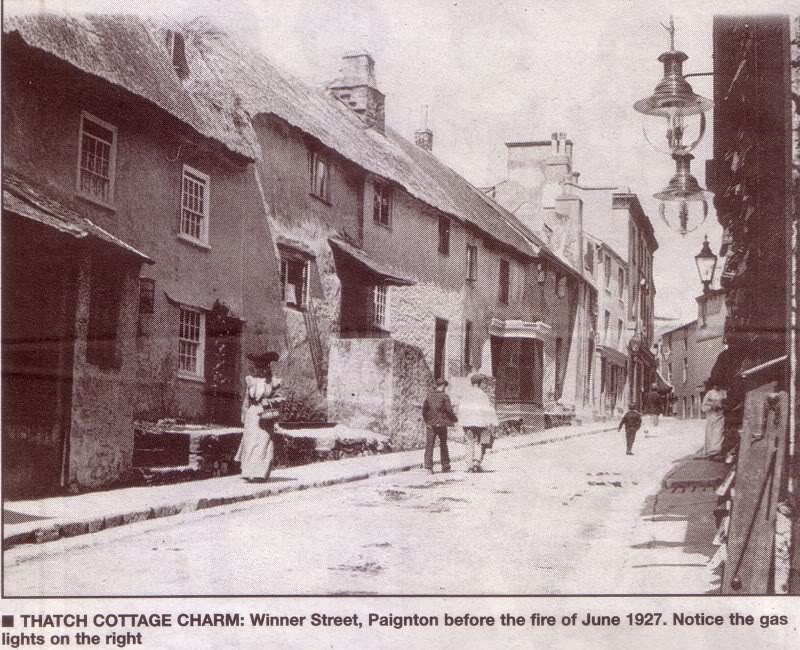
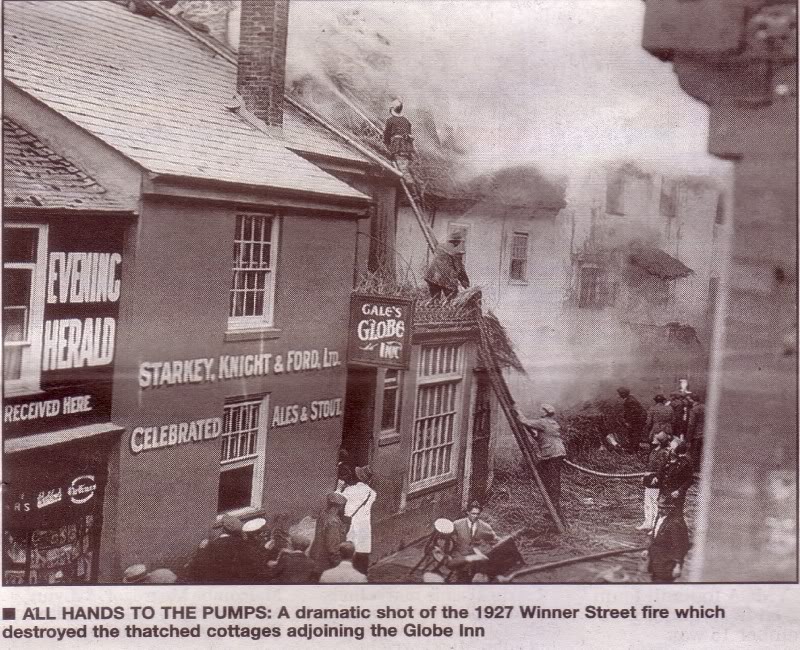

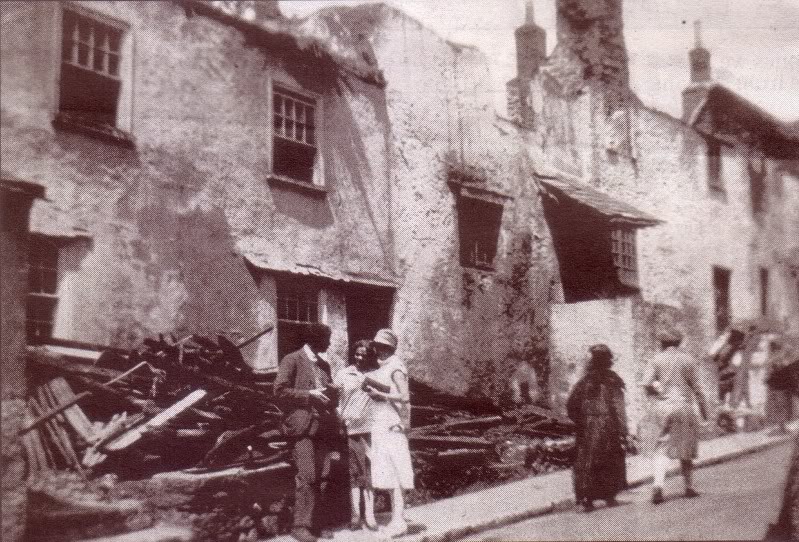











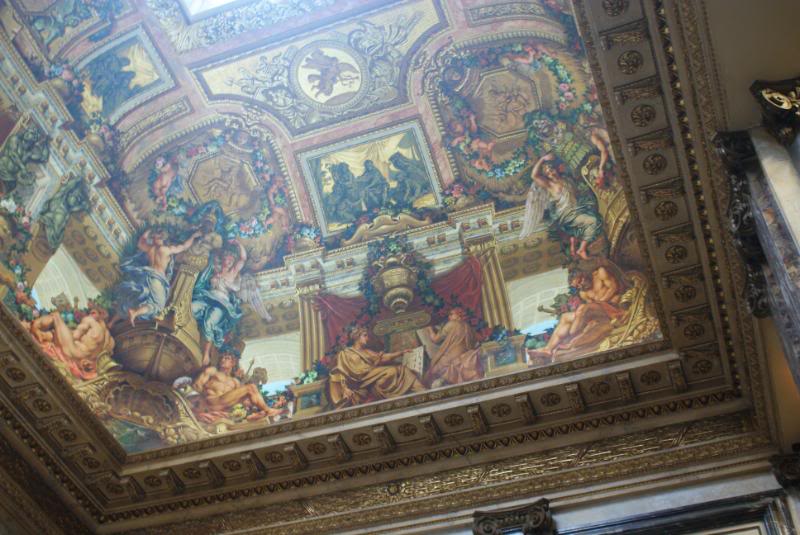



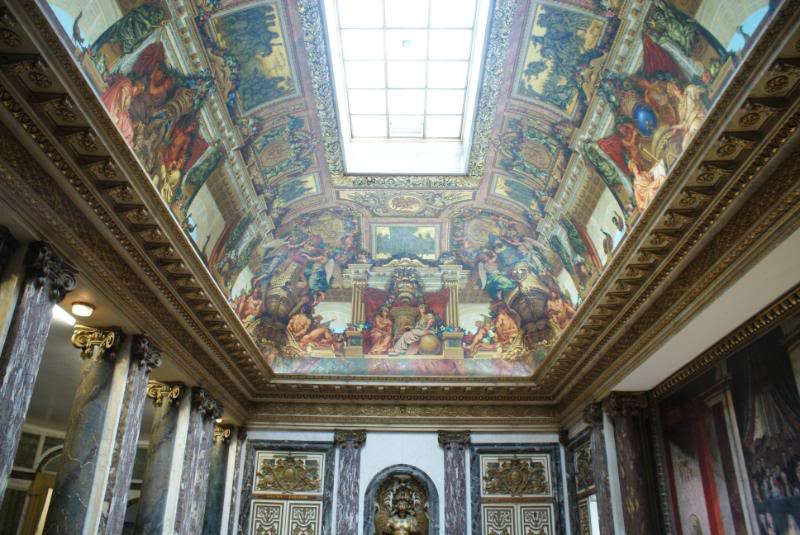
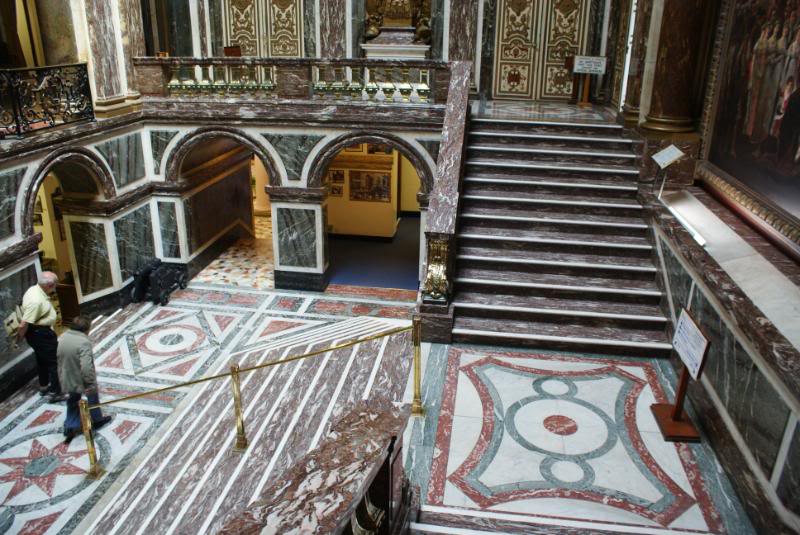
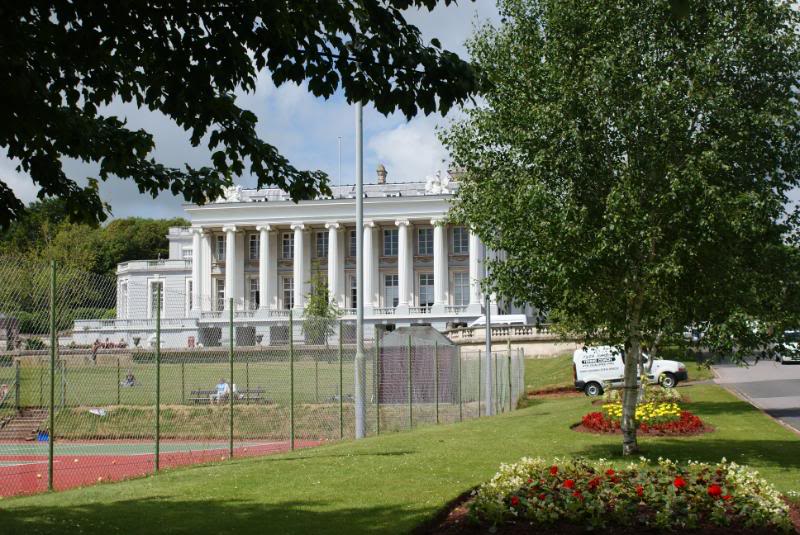

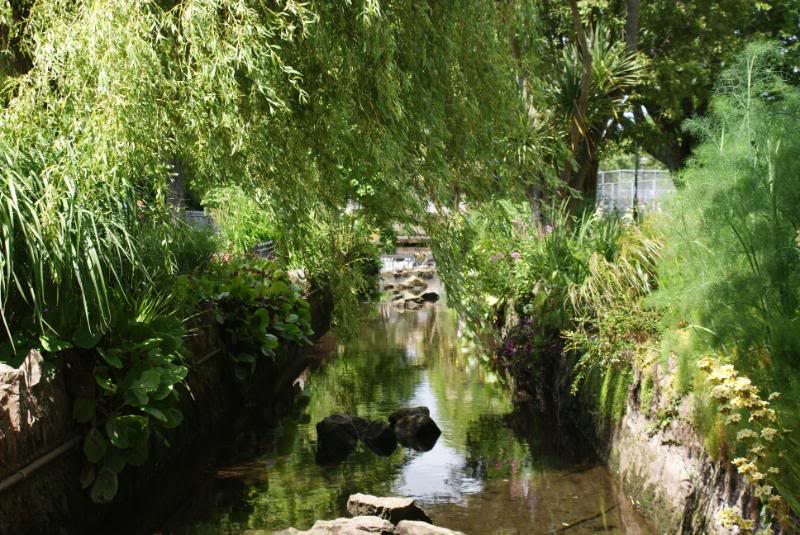









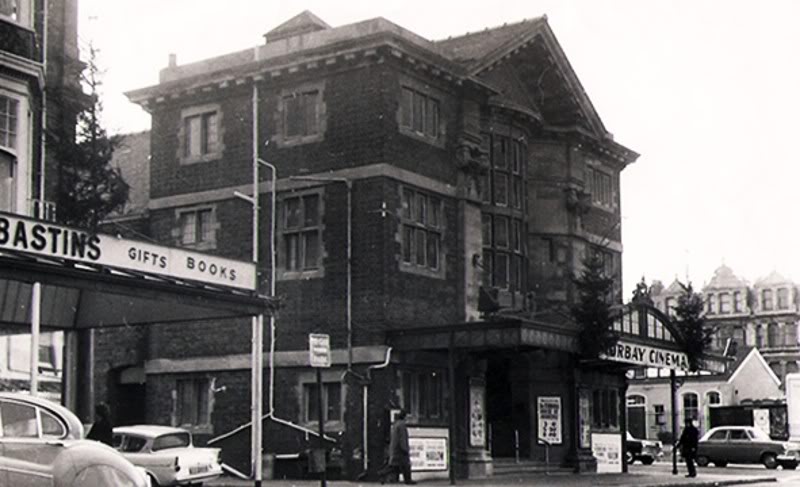
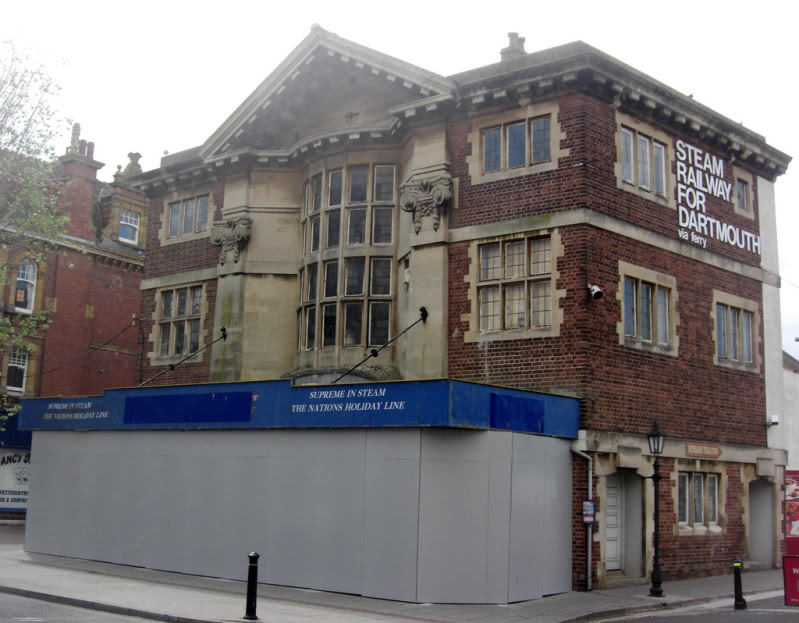











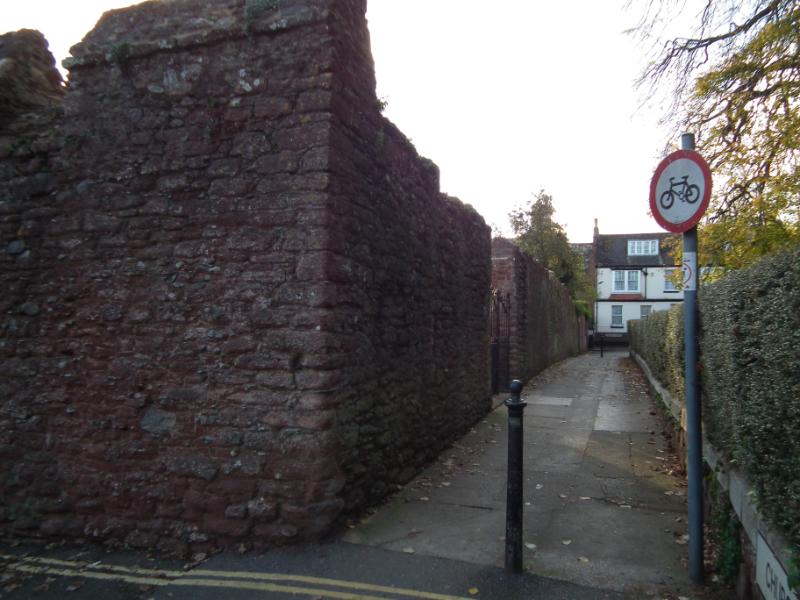
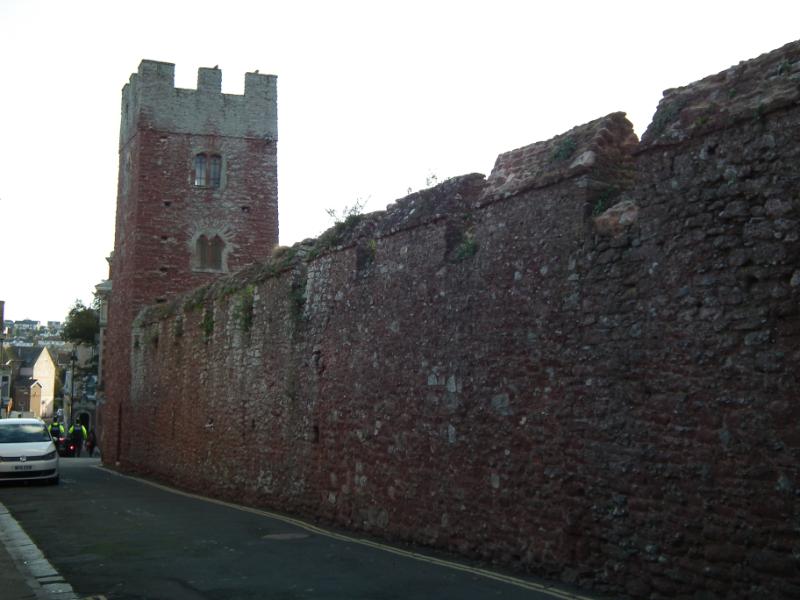
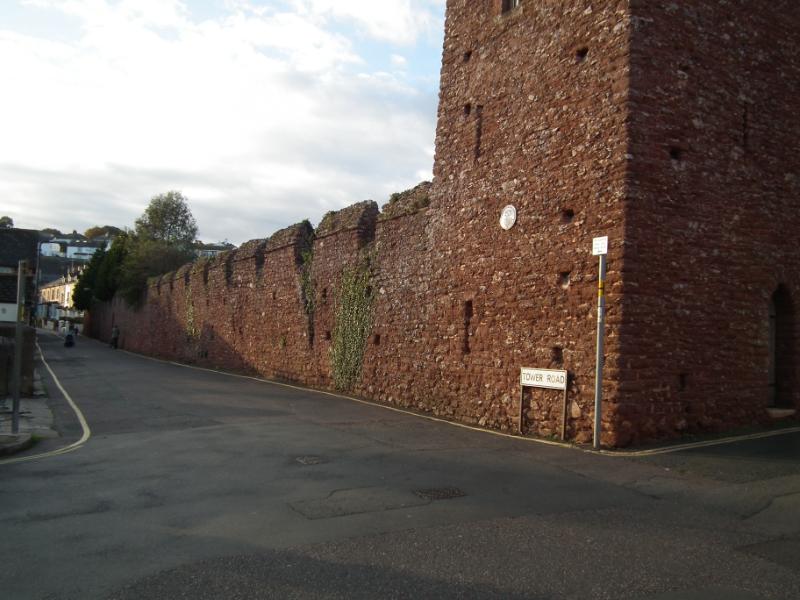
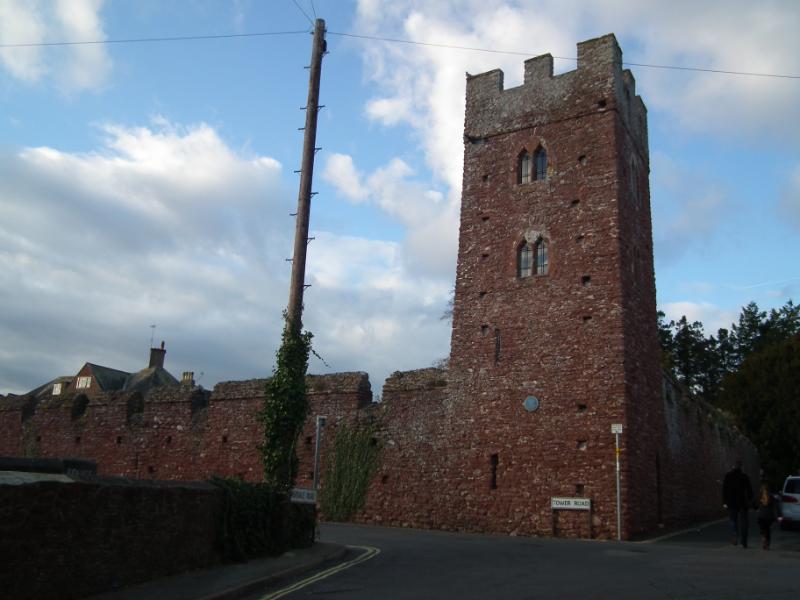
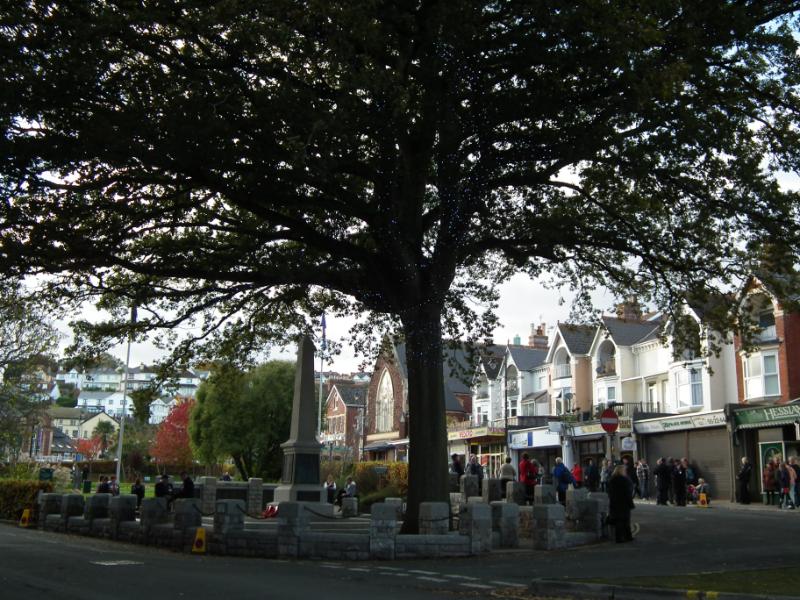








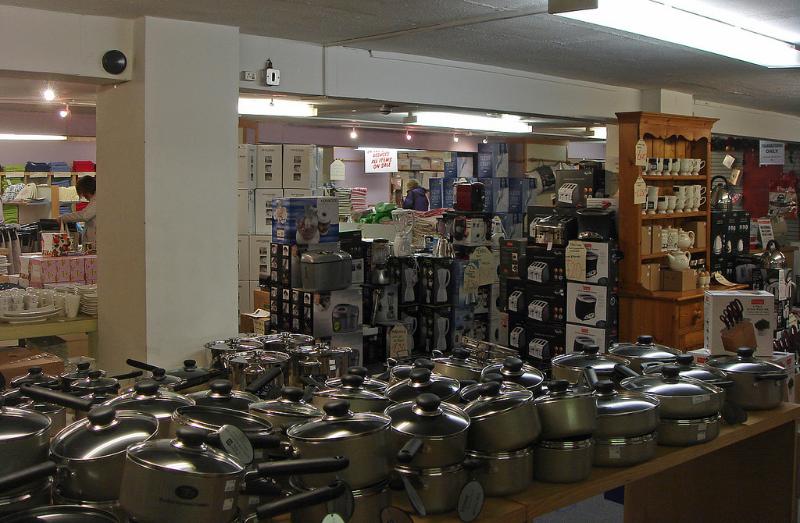
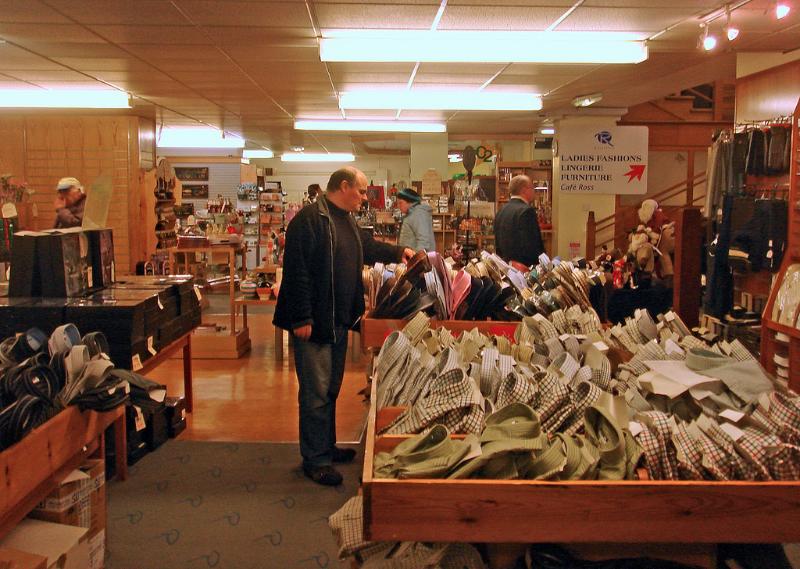
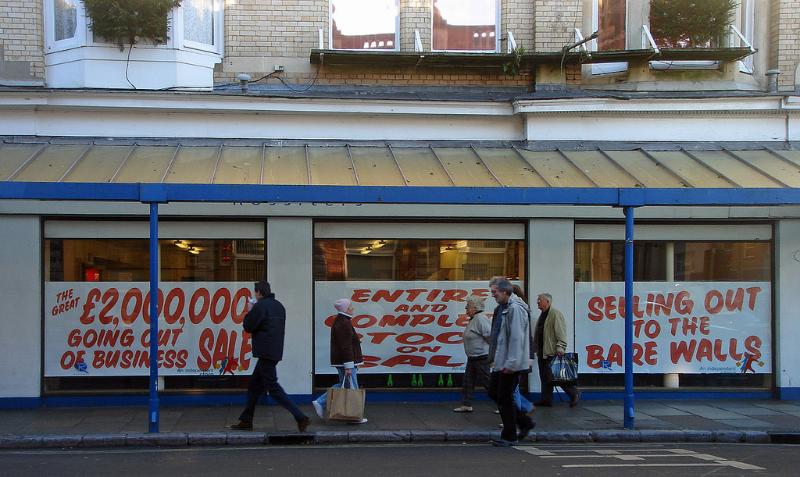









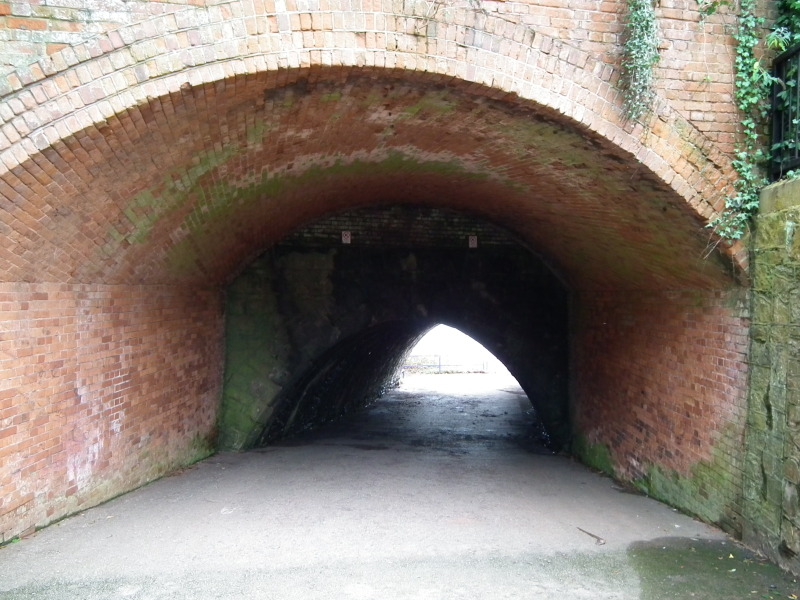

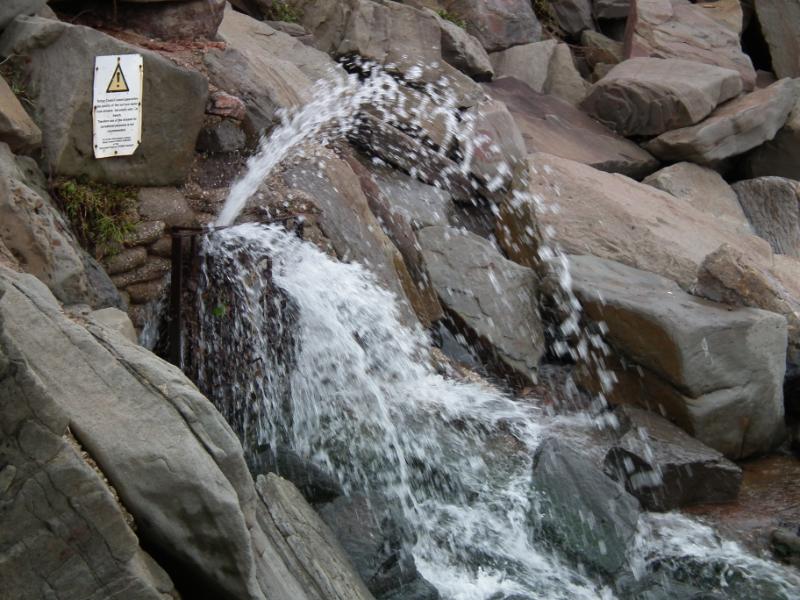
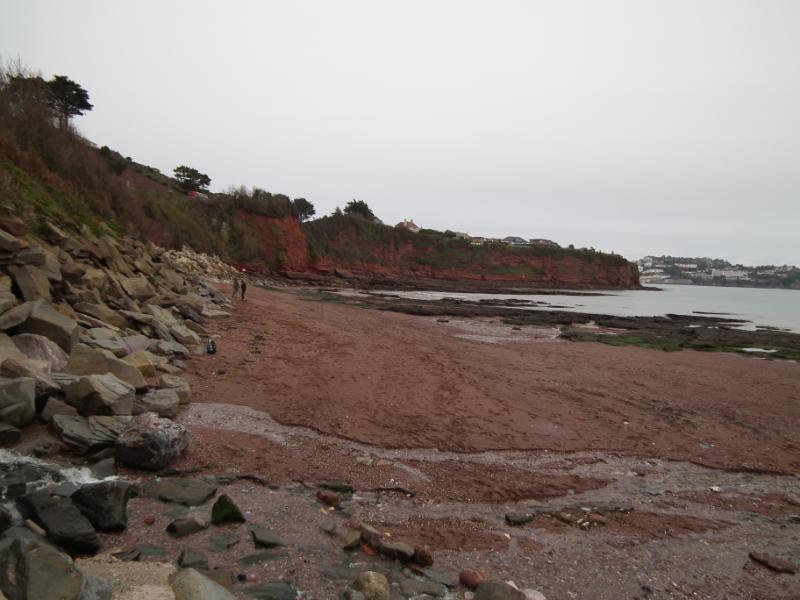
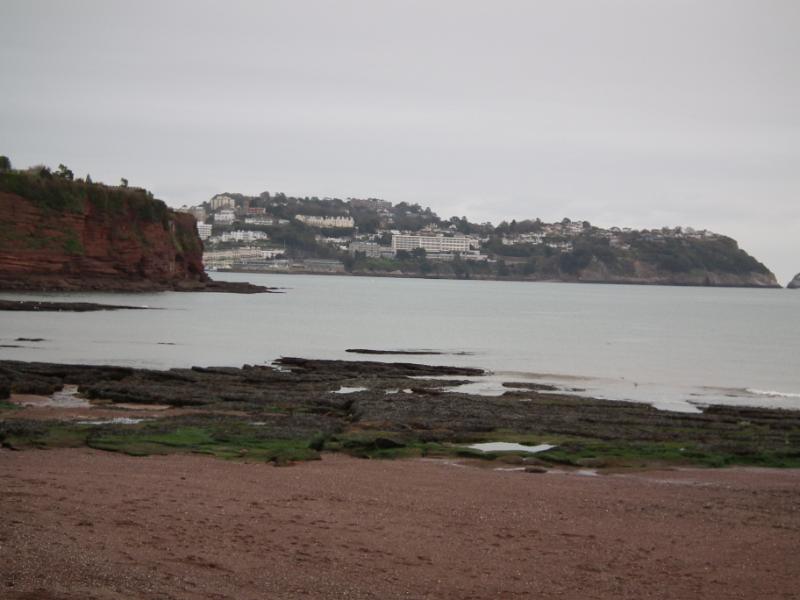

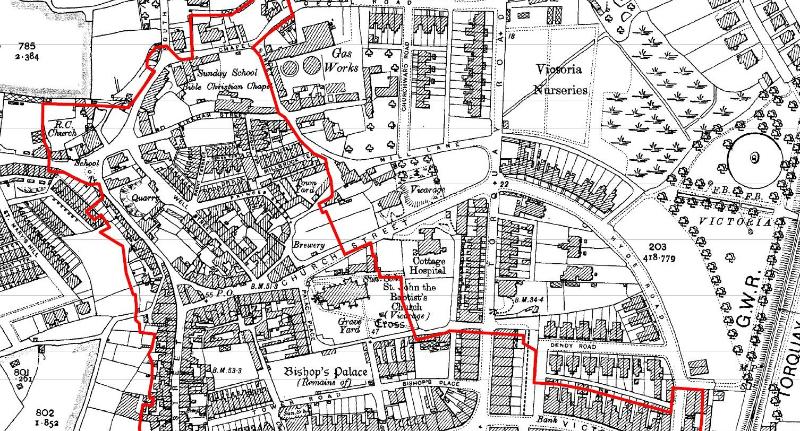



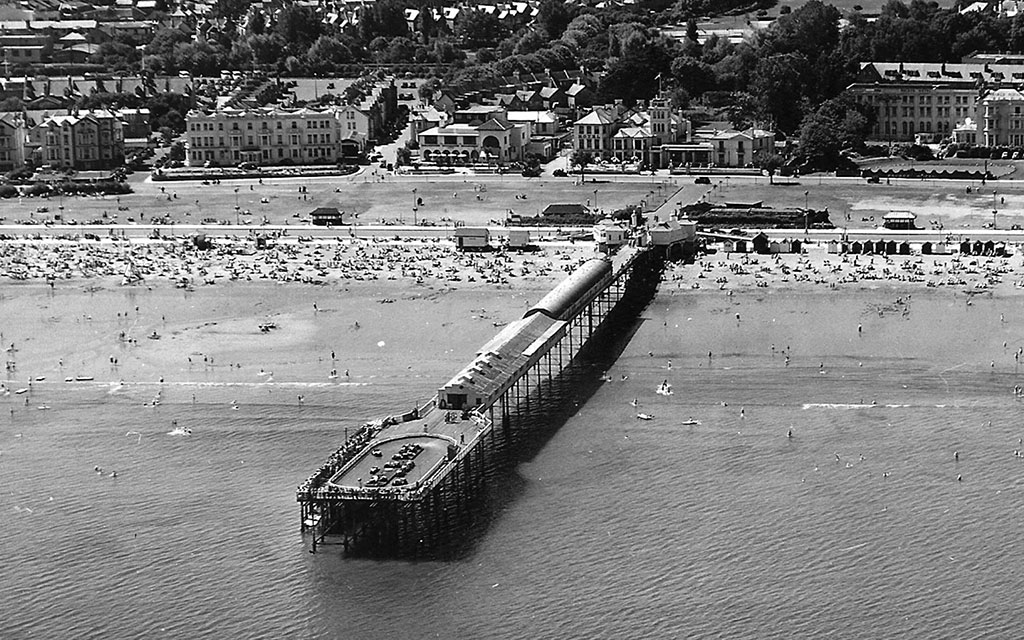








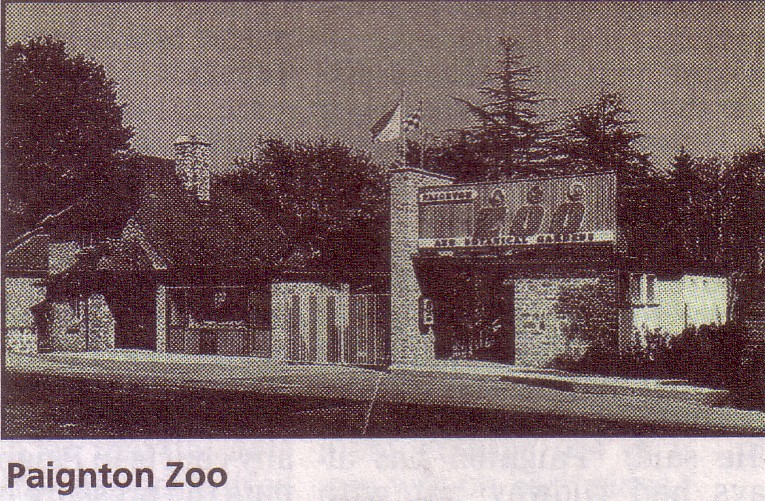
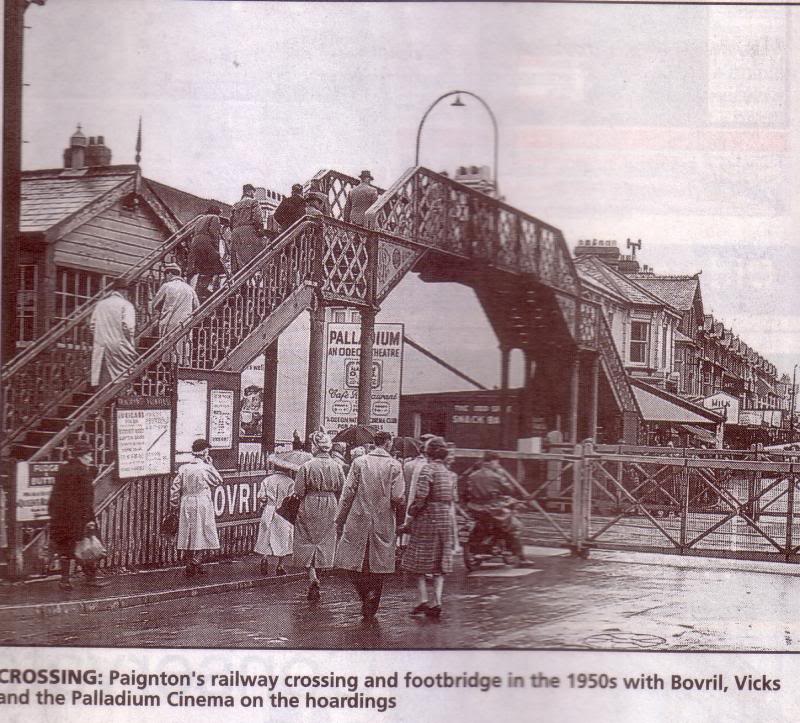
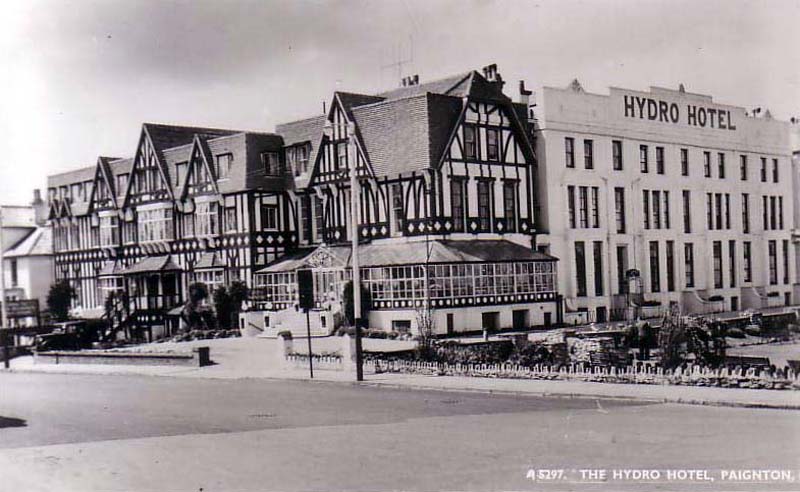
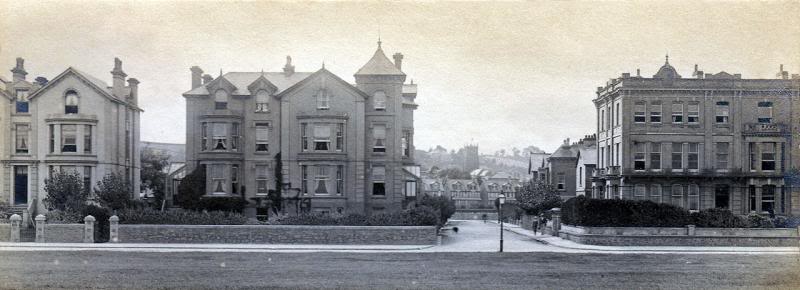






















 [/url
[/url










